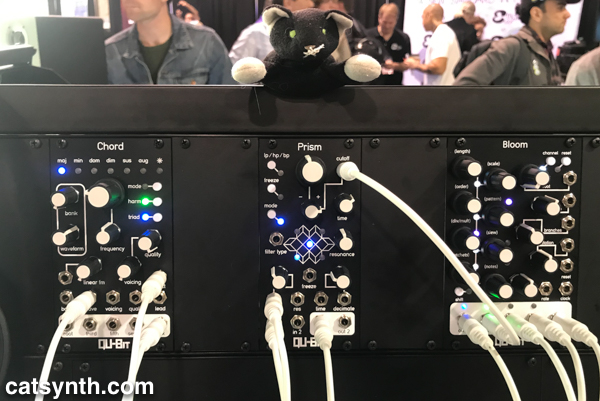One of our first stops at NAMM 2019 was to visit our friends at Qu-Bit Electronix. This year they had three new modules to share.

The first of the three was the Prism (center in the picture above). It combines three audio processors that are mapped to a three-dimension “prism” control space. One axis controls a comb filter, another a bit crusher, and the third is time/speed control. The audio processors operate on a buffer, which can either be continuously updated from audio input or “frozen” in time and looped. Finally, there is a
The second module was the Chord, or rather the new incarnation of the chord. It’s a four-voice polyphonic oscillator with both traditional waveforms (continuously morphable) and a new set of wavetables. The oscillators can be stacked into chords, or in this new version each controlled separately for polyphony in the music-theory sense of the word – yes, with the right sequencer, this module can do four-voice counterpoint. The chord mode includes a variety of standard western four-voice chords (i.e., with a seventh degree), but also the ability to add custom chords that include microtones or dense tone clusters. It’s also more compact than the original, slimmed down to just 14hp.
The final module was the Bloom, a sequencer that could generate variations on the fly using a proprietary fractal algorithm. The amount of variation, from none to completely random, can be controlled dynamically via CV, as can the number of steps in the sequence, for quite a range of variety. And with two channels, it would seem to pair nicely the Chord.
As always, it’s fun to visit with Qu-Bit and see what they up to, especially as they are CatSynth superfans. And we look forward to seeing these modules out in the wild over the course of the year. The Prism is due in March, the Chord in late spring, and the Bloom in the fall.
